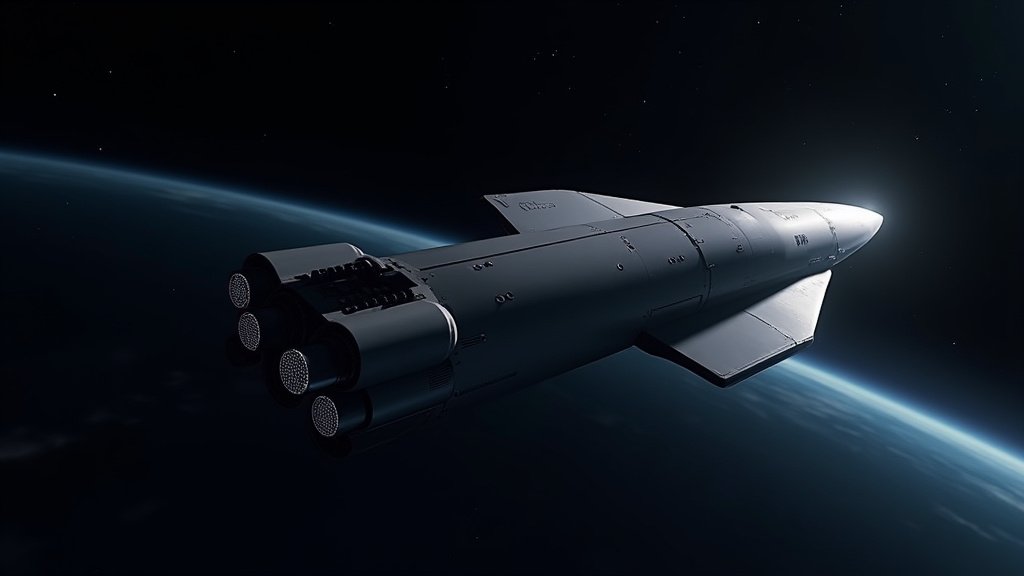A new era of space exploration is dawning as SpaceX successfully completed its tenth Starship test flight on August 26, 2025, marking a significant leap forward in the development of the world’s most powerful rocket. The monumental mission, launched from SpaceX’s Starbase facility in Texas, achieved a critical milestone by successfully deploying eight dummy satellites into orbit, showcasing the Starship’s advanced payload delivery capabilities. This achievement is a top priority for SpaceX and a trending topic in space news, underscoring the rapid progress toward reusable launch systems and ambitious interplanetary goals.
Starship’s Tenth Flight: A New Benchmark
The August 26th test flight saw the massive Starship vehicle, comprising the Super Heavy booster and the Starship upper stage, ascend from Starbase, Texas, at 6:30 p.m. CT. This tenth integrated flight test, originally slated for earlier in the week, faced delays due to ground equipment issues and unfavorable weather, but ultimately lifted off under clear conditions. The Super Heavy booster, powered by 33 Raptor engines, performed its ascent burn and then executed a controlled flip for a directional boostback burn before splashing down in the Gulf of Mexico as planned.
The Starship upper stage then continued its journey, igniting its six Raptor engines for an ascent burn and coasting through space. A key objective for this mission was the deployment of payload, a capability that had not been successfully demonstrated in prior flights. Approximately 18 to 20 minutes into the flight, Starship utilized its novel “Pez dispenser” like system to eject eight dummy Starlink satellites. These mock satellites, built to replicate the mass and dimensions of operational Starlink units, provided crucial data on deployment dynamics and orbital placement without risking expensive hardware. This successful payload deployment is a vital step for SpaceX’s Starlink internet constellation and future satellite deployment strategies.
Reentry and Splashdown: Pushing the Envelope
Following its successful payload deployment, Starship began its controlled reentry into Earth’s atmosphere over the Indian Ocean. During this phase, the vehicle relit one of its Raptor engines, a critical test for future deorbit maneuvers. The mission also evaluated new heat shield tiles designed to withstand the extreme conditions of atmospheric reentry, a crucial element for achieving full reusability. While the reentry resulted in some damage to the vehicle’s protective skirt and a control flap, the Starship remained under control throughout the descent. Ultimately, Starship executed a powered splashdown in the Indian Ocean, concluding a mission that lasted just over an hour. This marked a significant achievement, as it was the fifth time in the program’s history that a test flight did not end in vehicle loss and the first time a Starship was recovered from such a distant splashdown.
Program Goals and Future Implications
SpaceX’s Starship program, led by Elon Musk, is one of the most ambitious endeavors in space exploration, aiming to facilitate crewed missions to the Moon and eventually to Mars. The Starship system is envisioned as a fully reusable transportation system capable of carrying up to 100 people and significant cargo for deep-space missions. This tenth test flight, with its successful payload deployment and controlled reentry, brings SpaceX closer to realizing these objectives.
Previous test flights, while facing challenges, have steadily built upon each other, providing invaluable data for refinement and improvement. The success of Flight 10 provides critical data to inform the designs of the next generation of Starship and Super Heavy boosters, pushing the program towards its ultimate goal of making humanity a multi-planetary species. The successful deployment of satellites also highlights Starship’s potential for commercial applications, reinforcing its role in expanding SpaceX’s Starlink broadband network and other satellite services.
A Glimpse into the Future
The tenth flight test of Starship represents a pivotal moment, demonstrating significant progress in key areas such as payload deployment, engine relighting, and reentry performance. While the program continues its iterative development cycle, this successful mission serves as a strong indicator of Starship’s growing maturity. With SpaceX aiming for rapid iteration and frequent testing, the insights gained from this flight will undoubtedly accelerate the journey towards establishing a sustainable presence on the Moon and venturing to the Red Planet. The ongoing development at Starbase, Texas, continues to be a top focus for space enthusiasts and industry professionals alike, making Starship a truly trending topic in space news.






